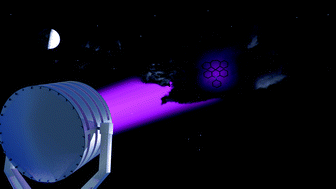Spiro-configured dibenzosuberene compounds as deep-blue emitters for organic light-emitting diodes with a CIEy of 0.04†
Abstract
Deep blue electroluminescence is highly required for organic light-emitting diode (OLED) technology. However, designing fluorophores displaying adequate CIE coordinates and particularly a low CIEy is far from an easy task. We report in this work the synthesis, the physico-chemical properties and the application of deep blue emitters constructed using the dibenzosuberene (DBS) molecular fragment in OLEDs. Three emitters, SPA-DBS, SIA-DBS and SQPTZ-DBS, have been constructed following a similar molecular design strategy that is the spiro connection of an electron rich unit, namely N-phenylacridine (PA), indoloacridine (IA) or quinolinophenothiazine (QPTZ) to the DBS core. The PA, IA and QPTZ fragments are known to be efficient hole injecters due to their strong electron-rich character. Through a structure/property relationship study, we analyse the electrochemical, photophysical and thermal behaviours of these three emitters. When used as an emitter in an OLED, a deep-blue emission with CIE of (0.16, 0.04) is obtained with SPA-DBS, reaching an EQE of ca. 1% and a Von of 4 V. The CIEy coordinate of 0.04 appears to be particularly low and fits the NSTC, ITU and EBU standards.

- This article is part of the themed collection: FOCUS: Light-emitting diodes technology


 Please wait while we load your content...
Please wait while we load your content...